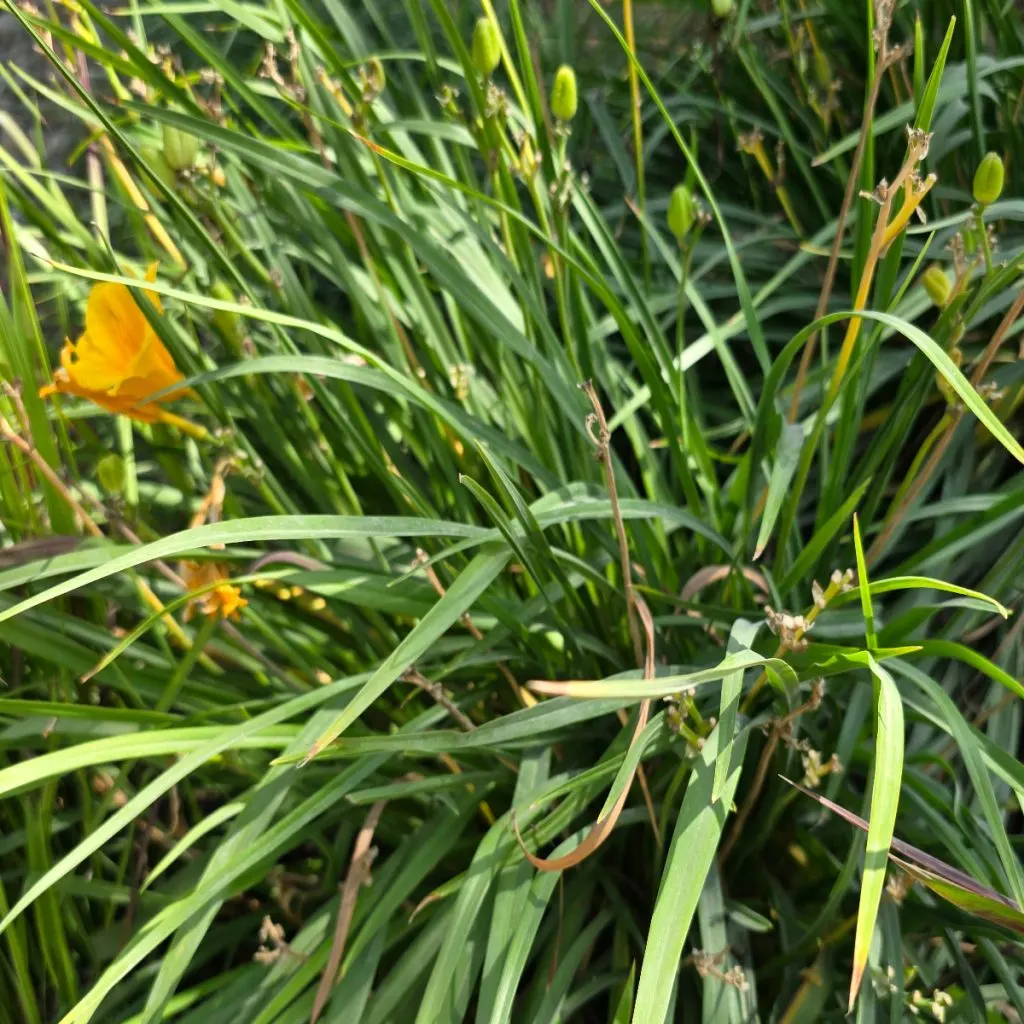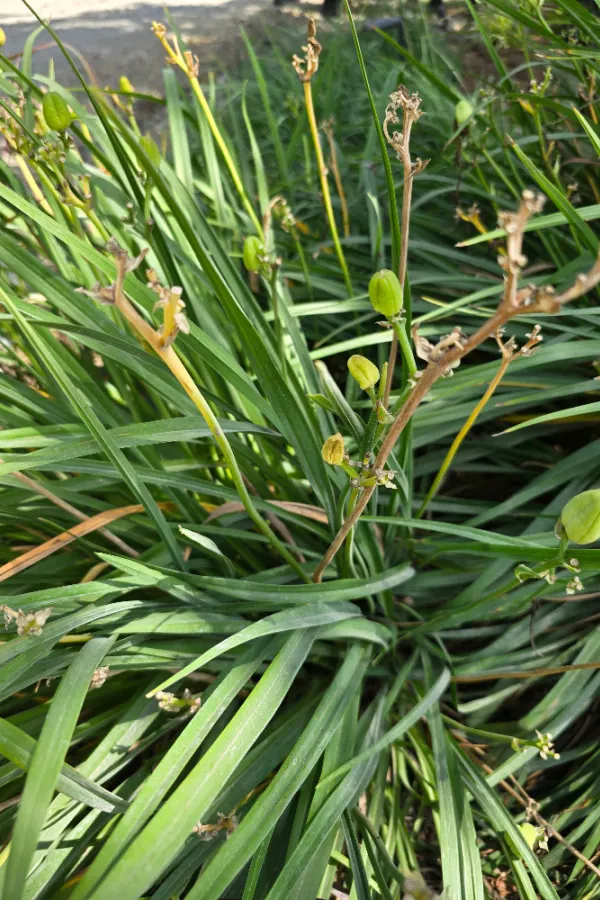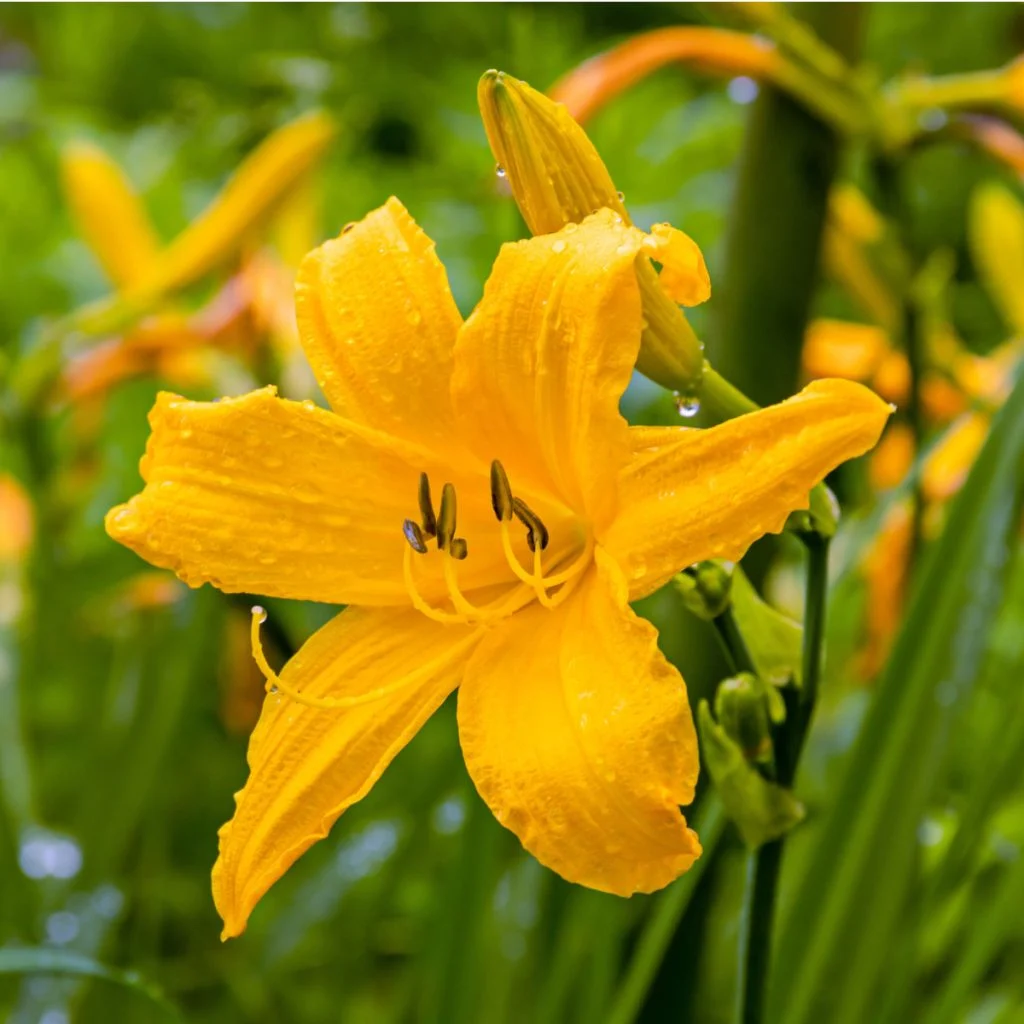Wondering what to do your daylilies after they finish their summer bloom cycle to help them bloom a second time?
Daylilies are one of the most popular perennials of all for gardeners to grow in their landscape. The hardy perennial not only fills beds with big color and interest, it does so without requiring a lot of attention. Daylilies have the good fortune of being highly drought tolerant, pest resistant – and disease resistant too!
But if there is one drawback for many gardeners, it’s how to keep them looking healthy and fresh after they finish blooming in early summer. Unfortunately, all too often, daylilies begin to look worn out and unsightly after they flower.

But here’s the good news – by giving them just a bit of attention in the summer after they bloom – you can set the stage for healthy green foliage for the rest of the summer and fall. And even better, in many cases, get them to bloom again this year!
What To Do To Daylilies After They Bloom
Deadheading Spent Blooms
One of the best things you can do to help keep your daylilies healthy is to deadhead old blooms. Daylily plants expend a lot of energy on their blooms. Not only to form and produce a flower, but also as the flower ages.
A typical daylily flower will only last a day or two. After opening up its showy petals, it quickly begins to fade. Unfortunately, as it does, the plant still continues to send power to it. It does this to try to help heal the fading flower and rejuvenate it – even though it is a futile battle.
As the spent bloom continues to decay on the plant, the daylily still continues to send energy to it. At this point, the energy it spends now turns into an effort to help the old bloom stem form seeds.
For the plant, this is a way to ensure self preservation. But it comes at an expense. The more energy the plant uses trying to fix old blooms and form seed heads, the less it has for keeping its foliage green and healthy. And – the less energy it has for future blooming as well!

Ever notice how the fronds or foliage of your daylilies pale in late summer? This is usually due to the energy the plant lost while flowering and then forming seed heads on old blooms. In a nutshell, the plant is tired and worn out from blooming and forming seeds!
How Deadheading Helps Save Energy
By simply removing the old blooms of your daylilies as they start to fade, you can stop the energy loss. And, in the process, help the plant conserve major energy. Not just to help keep its foliage in better shape for the remainder of summer, but also to help it save up more energy for its next flowering cycle.
The energy savings can be enough for some daylily varieties to even bloom again in the same season. And for those varieties that can’t, the benefits are still big. For starters, it helps to keep their foliage green and bright. Even more, it helps set up the following year’s blooms to be stronger than ever.
When deadheading daylilies, you not only need to remove the flower, but you also need to prune back the entire flower stem to the base of the plant. Failing to do so will still allow the plant to attempt to create seed pods on the existing stem. As long as the stem remains, the plant will continue to use precious nutrients on it.
To prune, simply follow the stem to as far back to the soil as you can cut it. This is also the time to cut back any foliage that is browning off or looking weak. This will not only improve the appearance of your daylilies for the rest of the summer, but it will also help the plant conserve energy.

Fertilizing Your Daylilies After They Bloom
Although daylilies do not require a lot of nutrients to thrive, giving them a little dose of energy right after they bloom can help them recover from the flowering cycle. Not only will that help spur on the next bloom set, it will also help brighten the foliage as well.
It doesn’t take much to feed daylilies. If you want to stay with an all-natural approach, sprinkle a quarter cup of worm castings around each plant right after they finish blooming.
Worm castings feed daylilies slowly, and with a perfect balance of light nutrients. Every time you water or it rains, the nutrients from the castings leach down into the roots. As they do, they energize the plant and help it to recover. Product Affiliate Link: 100% Worm Castings
You can also power up your daylilies with a good all-purpose balanced granular fertilizer. Granular fertilizers release their energy slowly as they break down. This helps daylilies recover and stay bright and green over the remaining growing season. Affiliate Link: Dr. Earth 5-5-5 MINIS Life All Purpose Fertilizer.
You don’t need to use both; one or the other is more than enough to power plants. The only other time that you want to fertilize daylilies is in the early spring. Powering up early will also provide key nutrients to help them set their first blooms.
The one time you do not want to fertilize daylilies is in early or late fall. Doing so at this time can cause unwanted late growth that can be susceptible to winter damage.
Dividing Overgrown Plants
If your daylilies happen to be a bit oversized and overgrown, summer is the perfect time to cut them back completely and divide them. Daylilies are extremely tough. So tough that it is hard to kill them even in the middle of the hot summer months.

To divide, simply cut plants back to within an inch of the ground. Dig around the outer edges and pop the plant out of its hole. Next, turn the plant over and divide it into equal sections. Creating new three to four inch divisions will allow the plants to grow for three to four years without worry. See: How To Divide Overgrown Daylilies In The Summer – Revive Your Daylily Plants!
When replanting, amend the new planting holes with a bit of compost. This will help the roots to set and expand easily and quickly. Within a few weeks, you will start to see fresh, new growth appearing from the ground.
By dividing in the summer, you allow your daylilies the chance to develop good root systems before winter sets in. That means they will be more than ready to hit the ground running next spring and flower with ease!
Here is to helping your daylilies regain their energy after they flower this summer – and to having healthier plants and more blooms in the future!
This Is My Garden
Follow Our Facebook Page For Great Gardening Tips And Advice! This Is My Garden Facebook Page
This Is My Garden is a garden website created by gardeners, for gardeners. Jim and Mary Competti have been writing gardening, DIY and recipe articles and books and speaking for over 15 years from their 46 acre Ohio farm. They publish three articles every week, 52 weeks a year. Sign up today to follow via email, or follow along!
